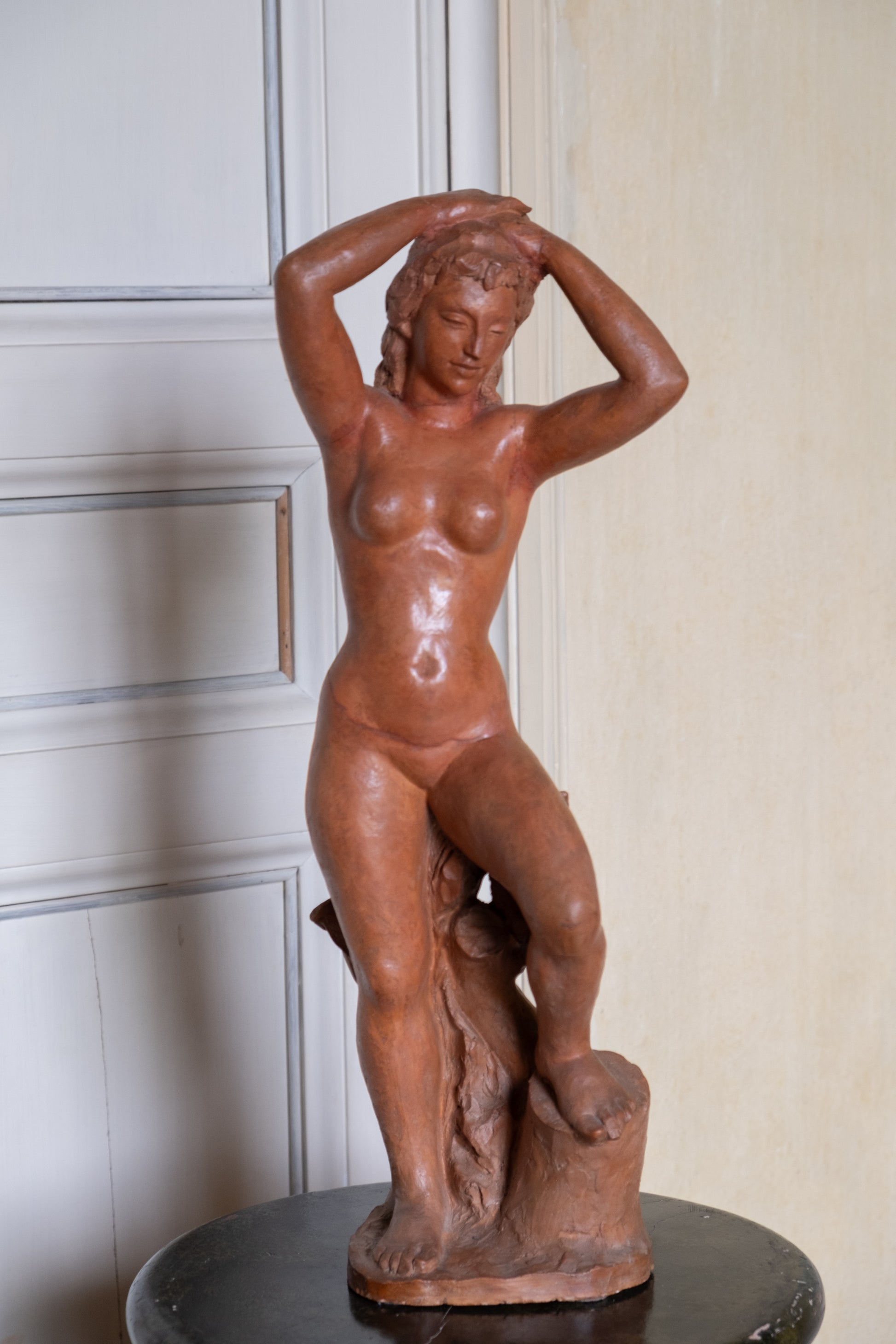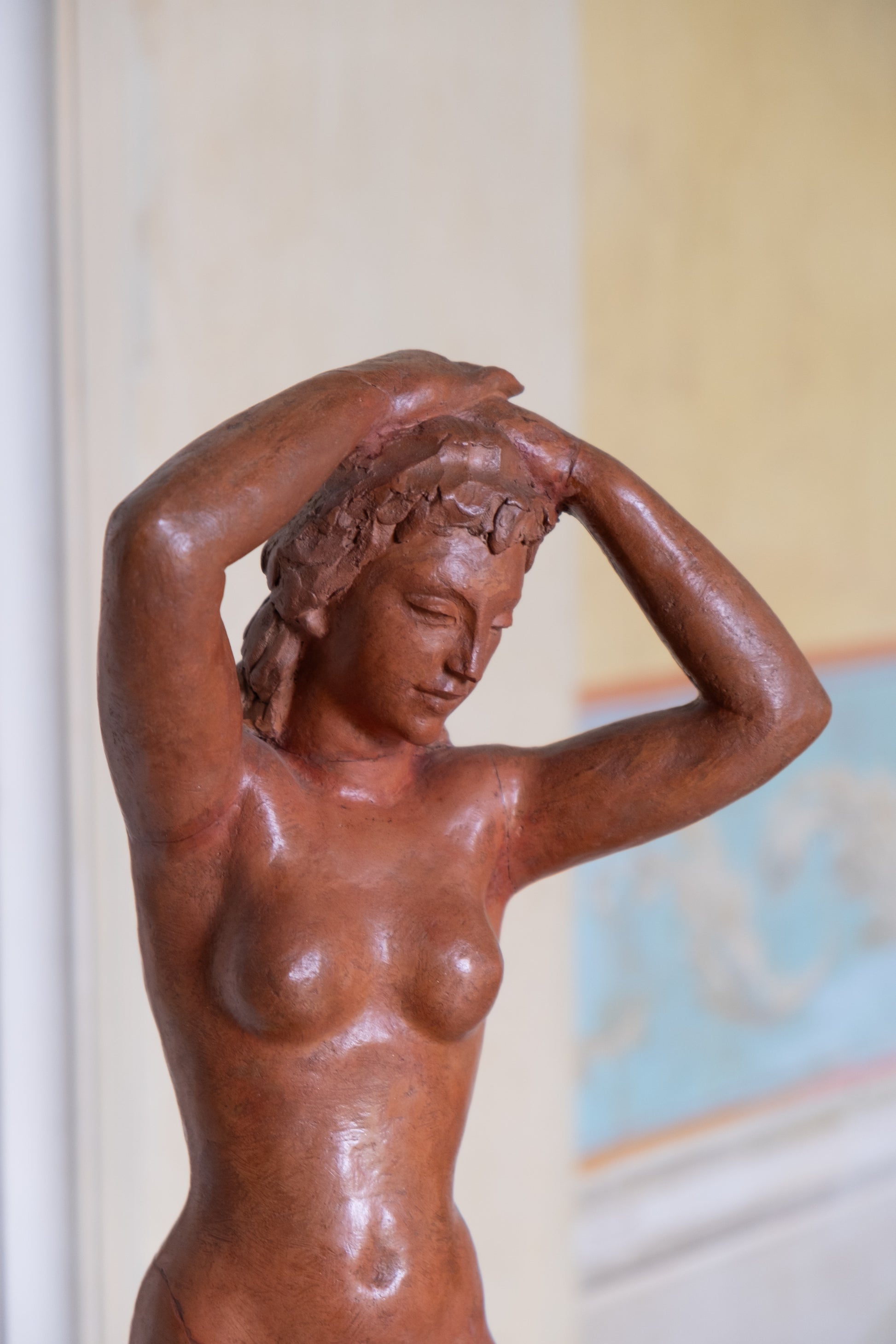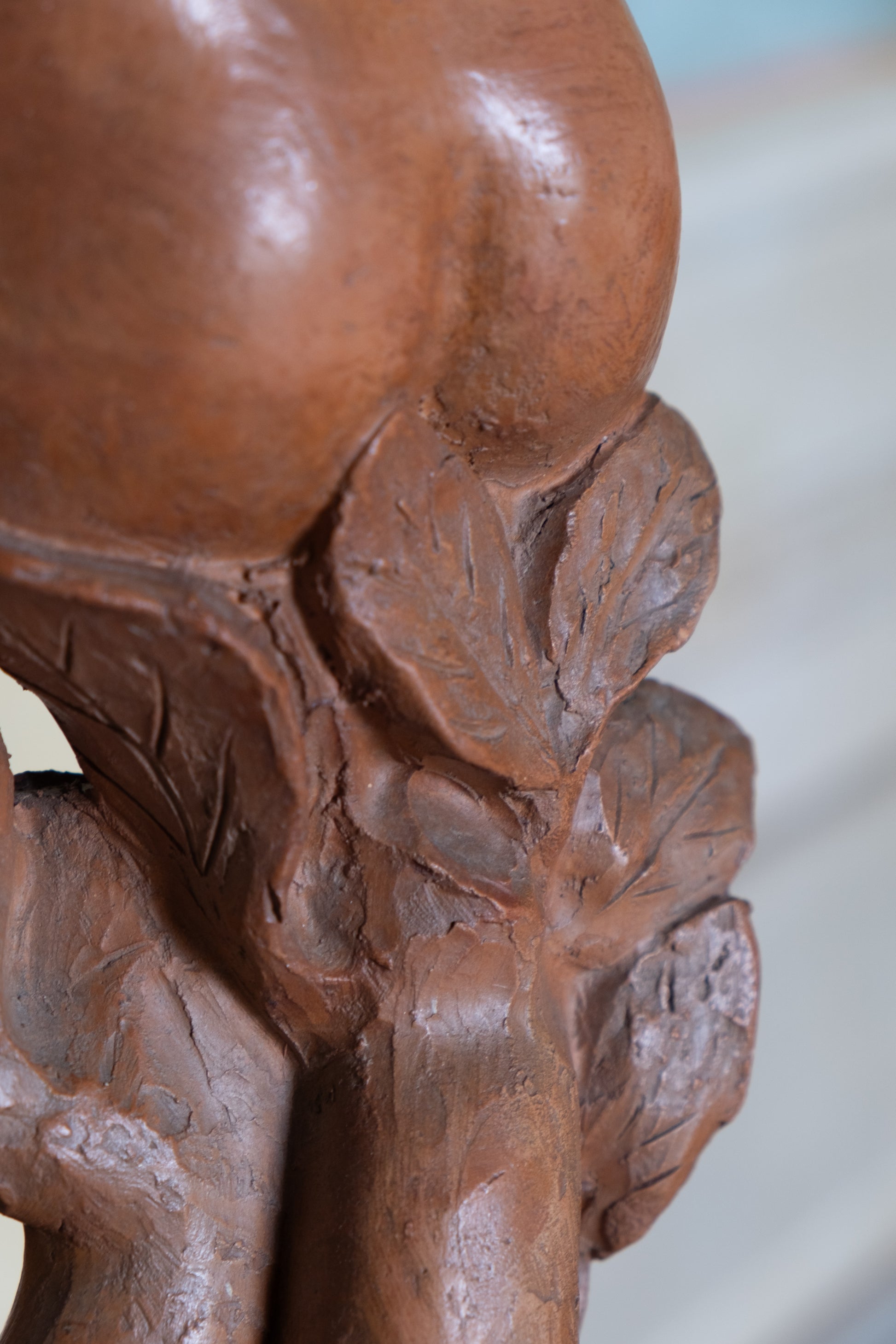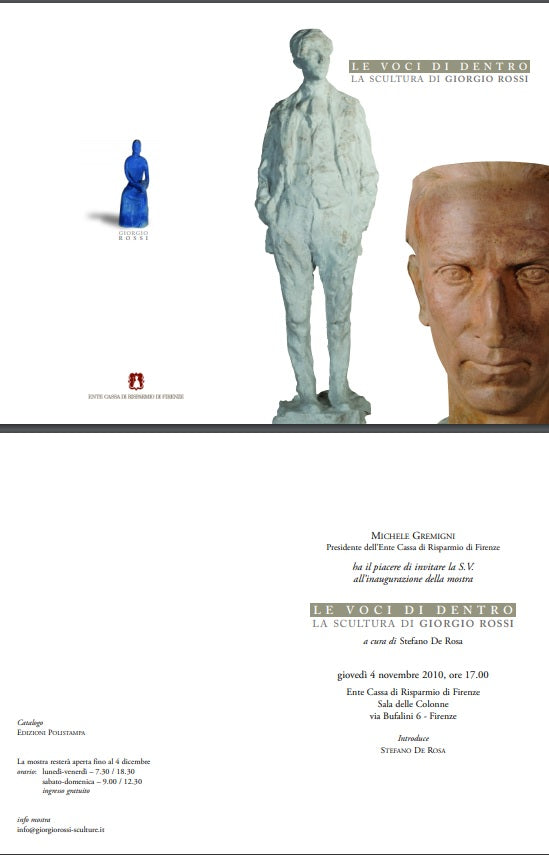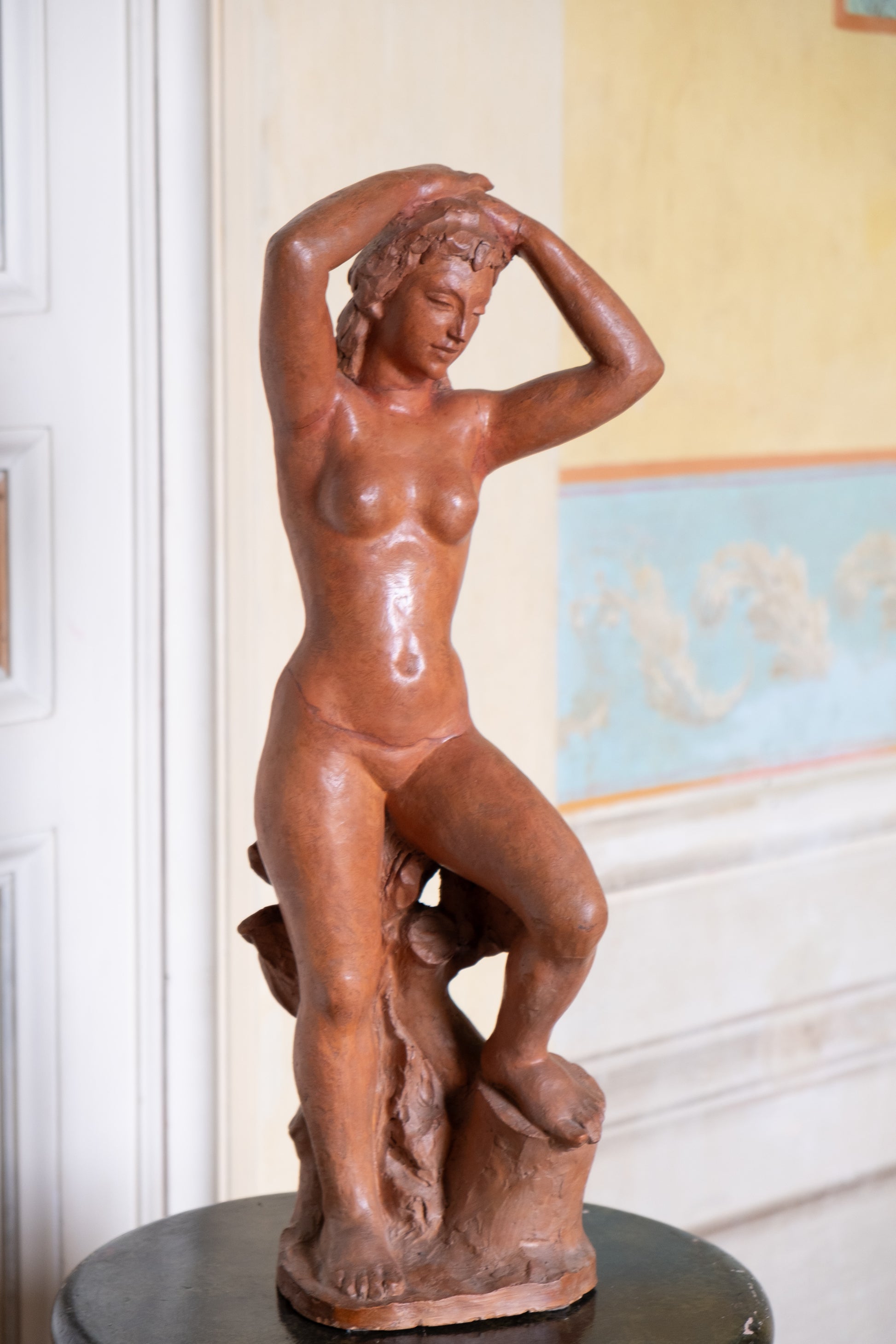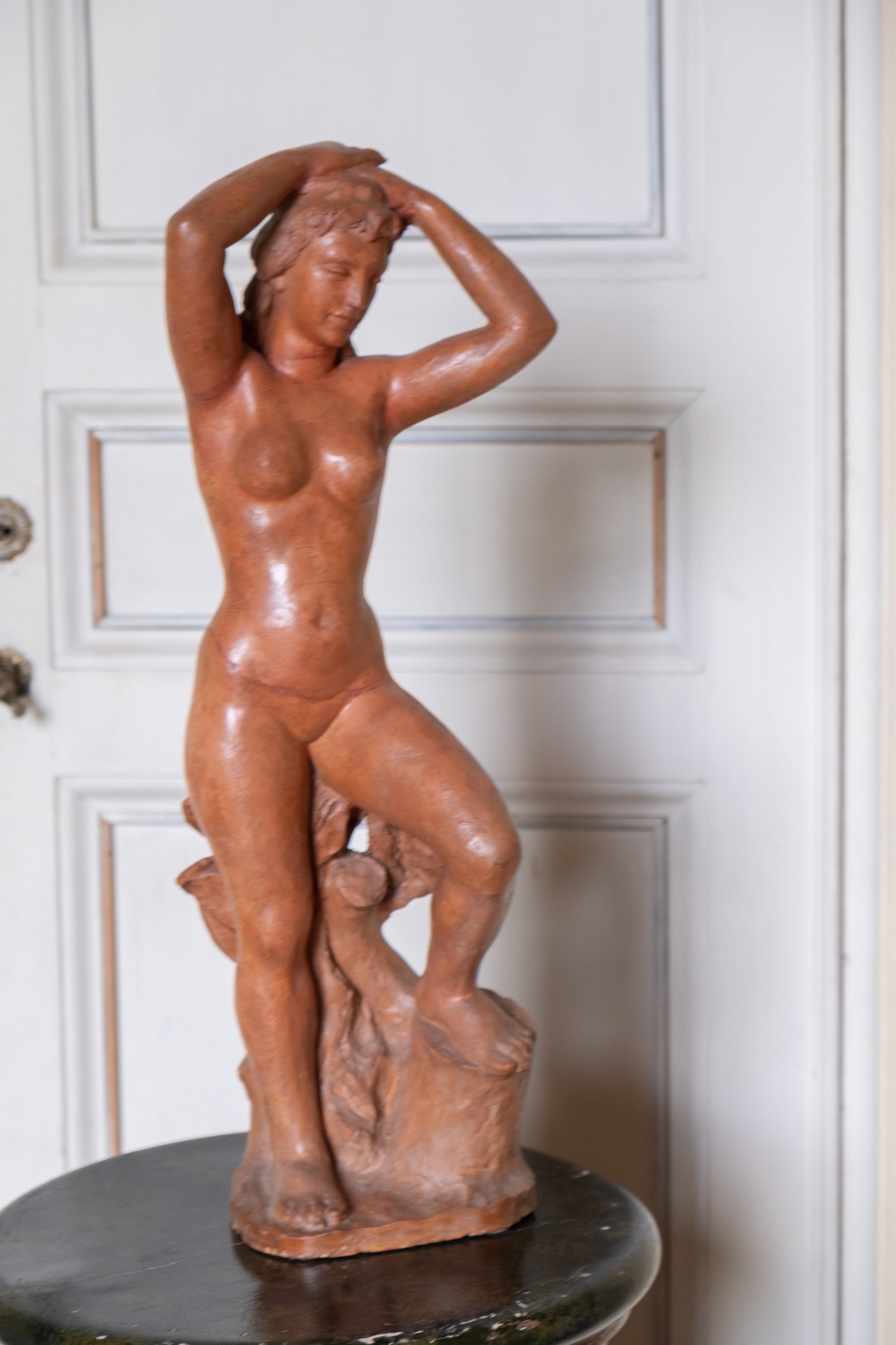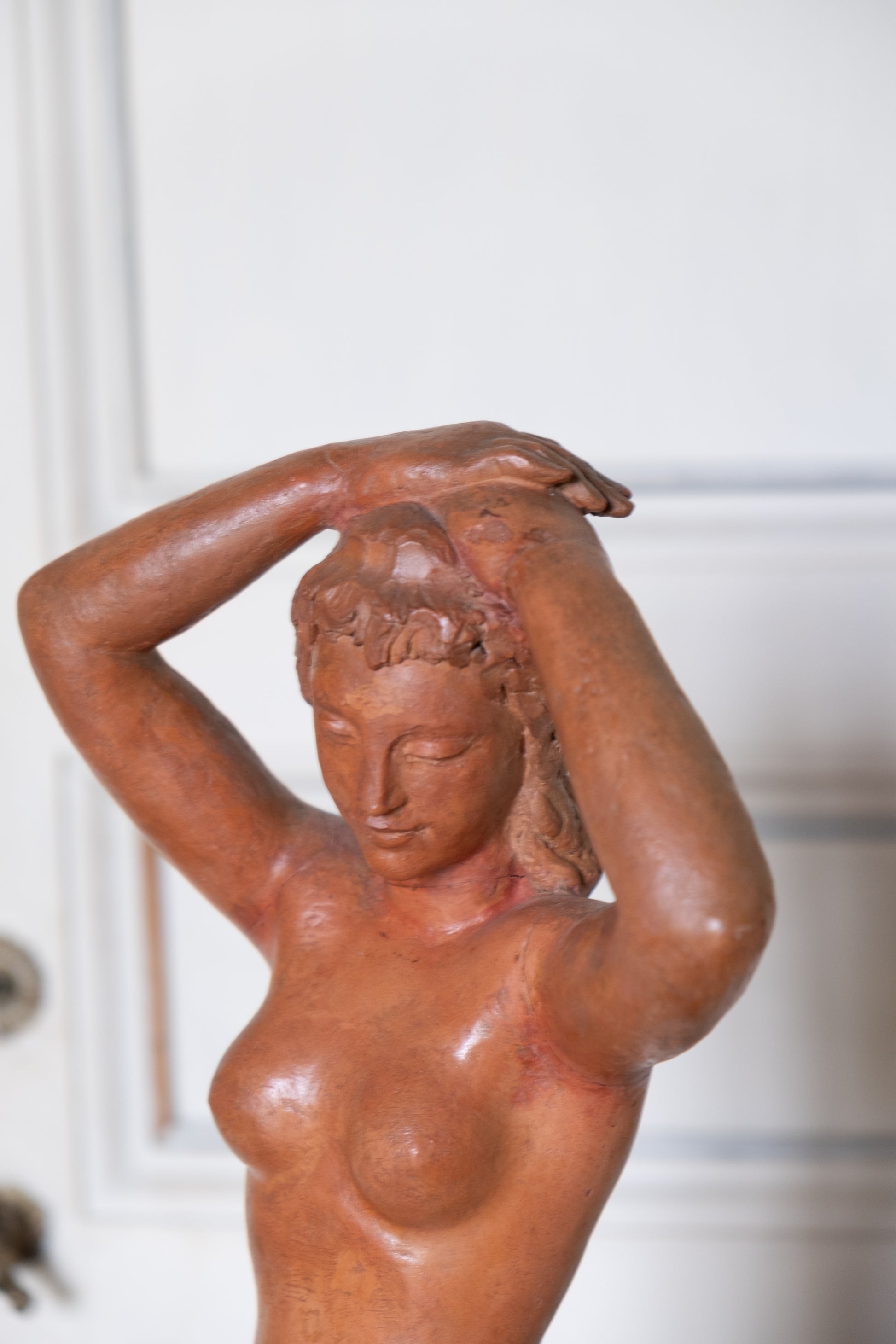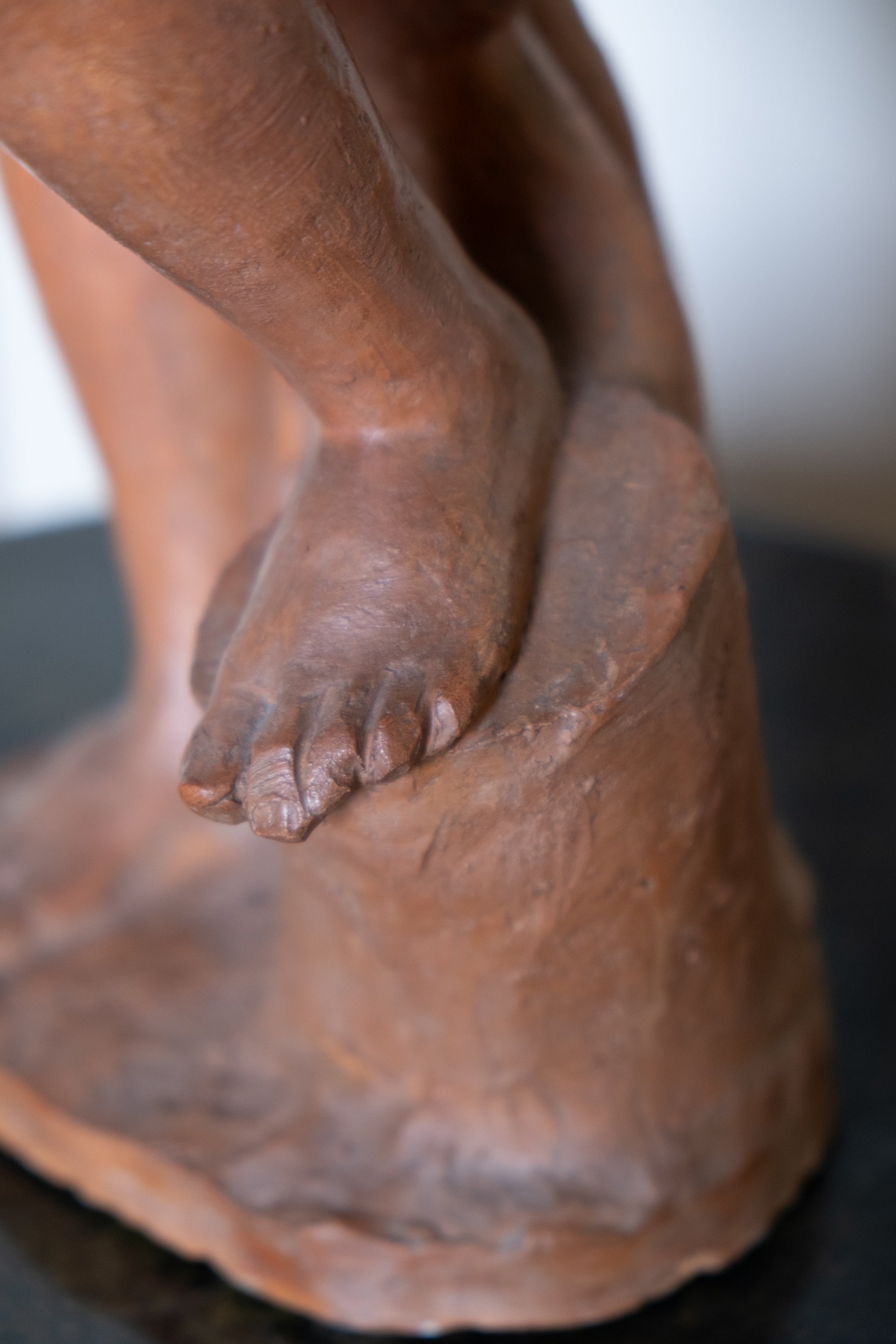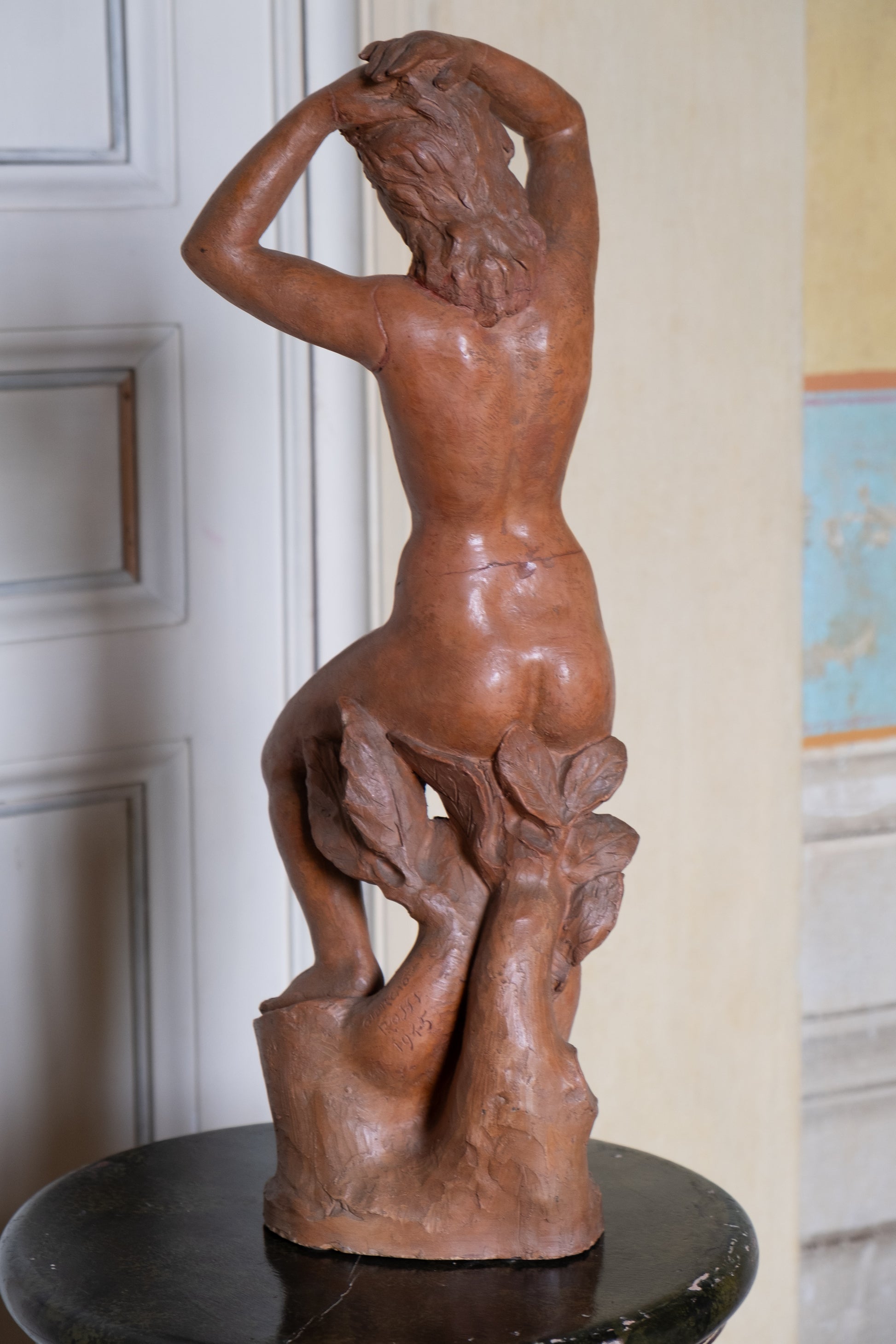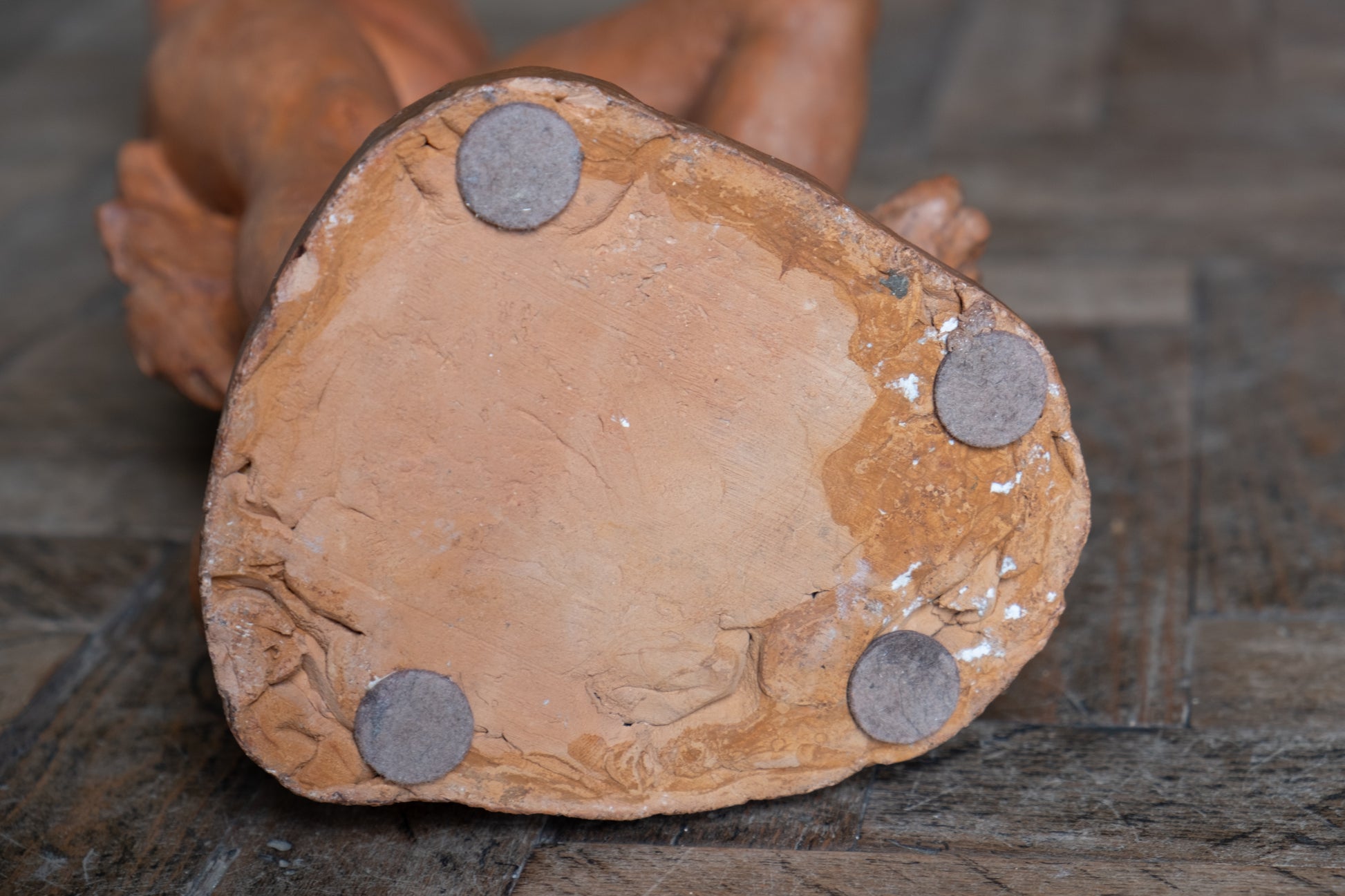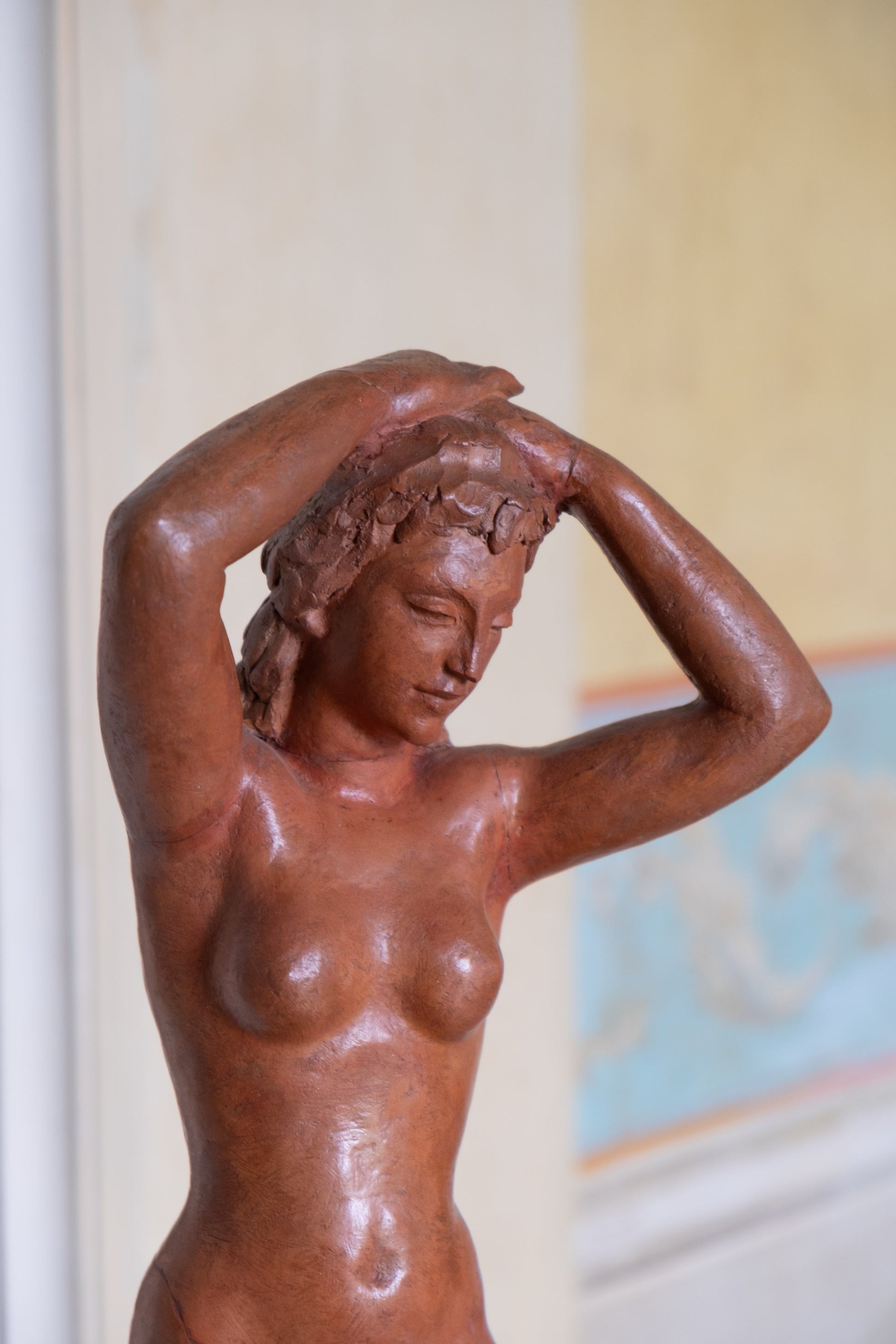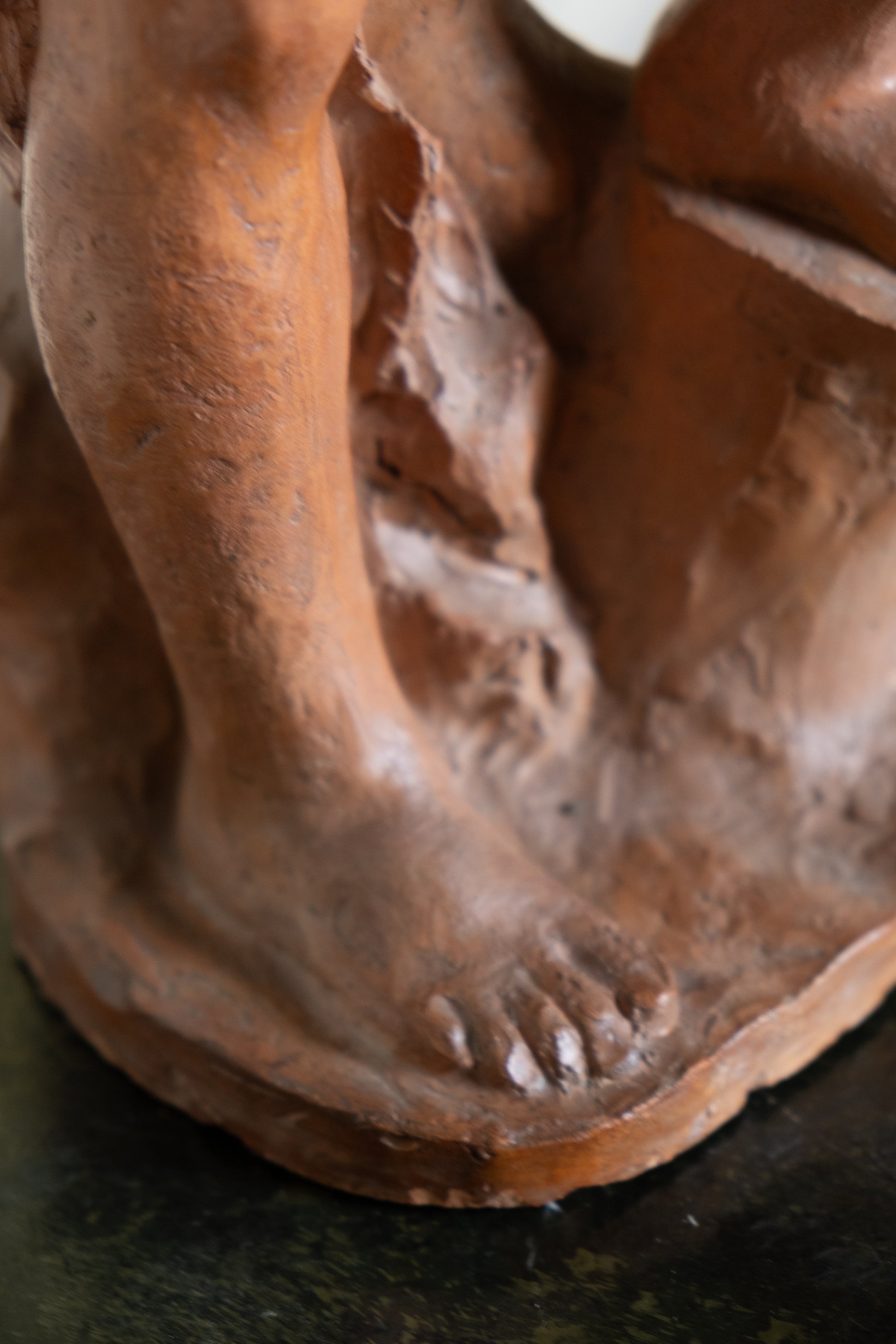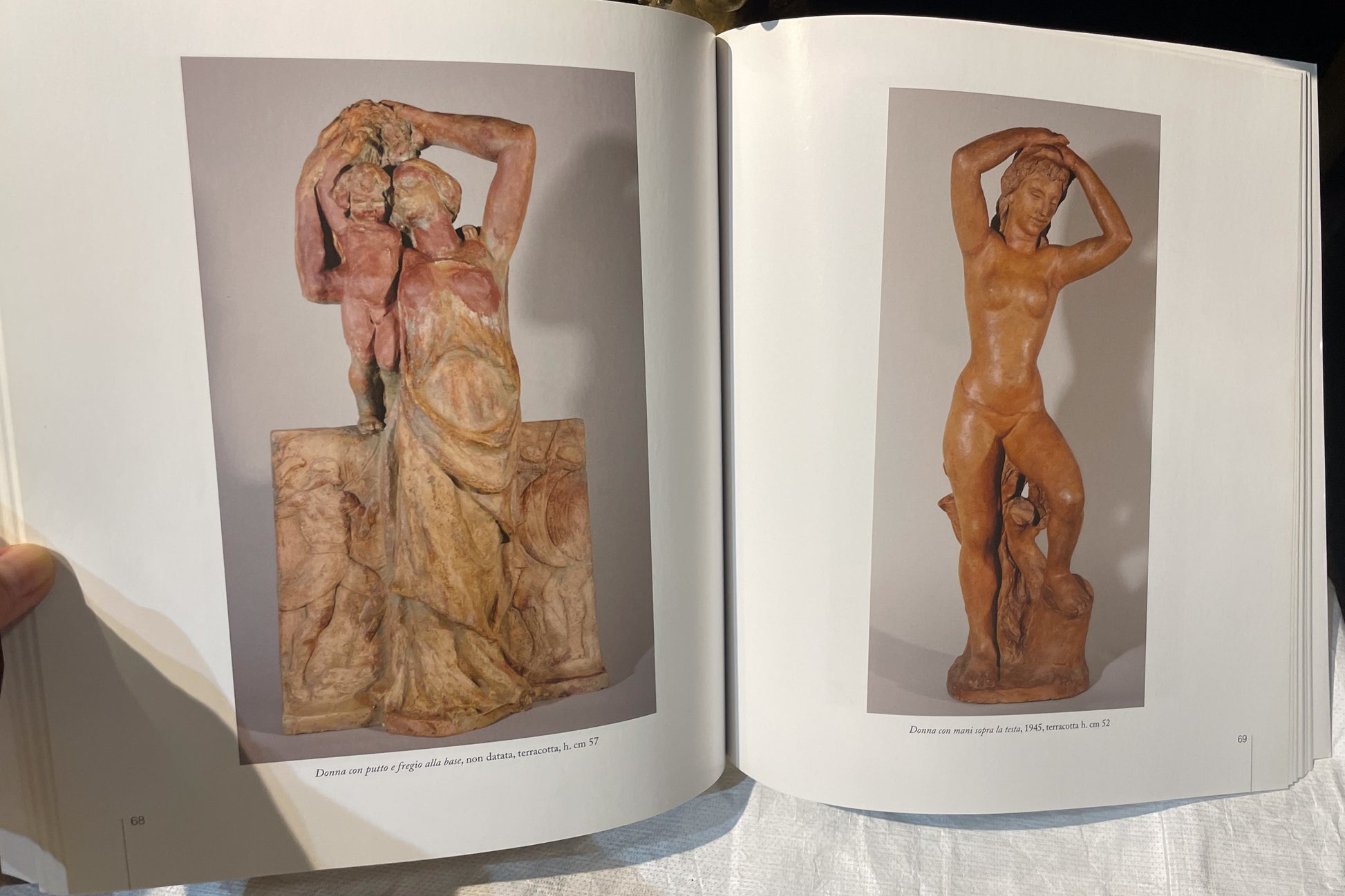@alina.malova
1945. Giorgio Rossi (San Piero a Sieve, 1892 – Florence, 1963). Female Nude.
1945. Giorgio Rossi (San Piero a Sieve, 1892 – Florence, 1963). Female Nude.
Couldn't load pickup availability
SOLD
Tuscan Sculptor of the 20th Century – Female Nude, Dated 1945
Artist:
Giorgio Rossi (San Piero a Sieve, 1892 – Florence, 1963)
Nude Woman with Hands Above the Head, Dated 1945
Terracotta, signed and dated on the back ("Giorgio Rossi 1945")
Height: 52 cm
Description:
This elegant terracotta sculpture, signed and dated 1945, depicts a young nude woman standing next to a tree trunk, with her hands raised and resting behind her head. The figure strikes a delicate balance between introspection and poise, without ever falling into the rigidity of academic mannerism.
Carved with particular attention to the curving lines and the fluid rhythm of the pose, the sculpture recalls a quiet classical sensuality filtered through the lens of a refined Tuscan humanism. The work is representative of Rossi’s mature style, marked by a return to essential forms and the influence of the 15th-century Florentine masters, notably Donatello.
The figure's relaxed yet composed posture, the lean and well-structured anatomy, and the harmony of proportions reflect the sculptor’s pursuit of spiritual truth through simplicity of form. The sculpture is an expressive synthesis of grace and inner calm, in line with Rossi’s aesthetic ideals in the immediate post-war period.
A discreet and well-executed restoration is visible at the waist and right arm. According to the artist’s family, the damage was caused by the devastating flood of November 1966, which affected his studio on Via degli Artisti in Florence. The restoration was done with care and respect for the original patina.
Condition:
In good overall condition, with traces of an old restoration (waist and arm), consistent with the flood of 1966 in Florence, as confirmed by the artist’s family.
Provenance: Directly from the family of the artist.
Exhibitions (selected participations by the artist):
– 1906, 1912–13, 1916–18: Società di Belle Arti, Florence
– 1920: Mostra d’Arte Sacra, Venice
– 1925: Premio Principe Umberto, Permanente di Milano
– 1930, 1936: Biennale di Venezia
– 2007: Giorgio Rossi. Scultore nel secolo breve, Palazzo Panciatichi, Florence
– 2010: Le voci di dentro. La scultura di Giorgio Rossi, Sala delle Colonne, Ente Cassa di Risparmio di Firenze
– 2011: Nel segno della Sieve, Sala delle Eroine, Palazzo Comunale, Pontassieve
– 2013: Volti dal passato. Giorgio Rossi e le sue Muse, Palazzo Medici Riccardi, Florence
Bibliography:
– Le voci di dentro. La scultura di Giorgio Rossi, ed. Stefano De Rosa, Florence, Edizioni Polistampa, 2010, p. 69 (illustrated)
– Gigi Salvagnini, Giorgio Rossi. Un lungo viaggio verso il Novecento, Centro Libero Andreotti, Florence, 2003, p. 20
About the artist:
Giorgio Rossi was born on January 13, 1892 in San Piero a Sieve, Tuscany.
Trained at the Accademia di Belle Arti in Florence, he studied under Antonio Bortone, from whom he inherited a rigorous sculptural discipline and a strong sense of artistic integrity. Rossi debuted at the age of fourteen at the Annual Exhibition of the Società di Belle Arti in Florence in 1906 and went on to exhibit regularly in the following decade.
During the 1910s and 1920s, his work was showcased in major national exhibitions, including the Mostra d’Arte Sacra in Venice (1920), the Concorso Duprè in Florence, and the Milan Permanente.
He received awards and commissions for both public monuments and funerary sculptures, and in 1918 he was named honorary member of the prestigious Accademia delle Arti del Disegno.
In the 1930s, Rossi participated twice in the Venice Biennale (1930 and 1936), confirming his national relevance.
His sculptures in alabaster gained recognition in Volterra, where he taught at the Scuola Artistico-Industriale per l’Alabastro. There, he combined classical training with a personal language inspired by the Tuscan quattrocento, especially Donatello, whom he considered a timeless reference point. He was included in the Dizionario degli scultori italiani by Ugo Ojetti and Adolfo Comanducci, a testament to his recognition among his contemporaries.
Despite living in relative seclusion in his later years, particularly after returning to Florence from Volterra, Rossi continued to sculpt, focusing on terracottas that captured the psychological depth and human dignity of his subjects. Rossi’s art has been described as a “stoic coherence”—a personal humanism, reflective yet detached from avant-garde extremes. In 2007, his work was the subject of a major retrospective at Palazzo Medici Riccardi in Florence, titled Giorgio Rossi. Scultore nel secolo breve, which reaffirmed his place in the canon of 20th-century Tuscan sculpture.
He died in Florence in 1963, leaving behind a body of work that bridges classical tradition and modern sensibility with quiet determination.
Materials
Materials
Dimensions
Dimensions
Care information
Care information
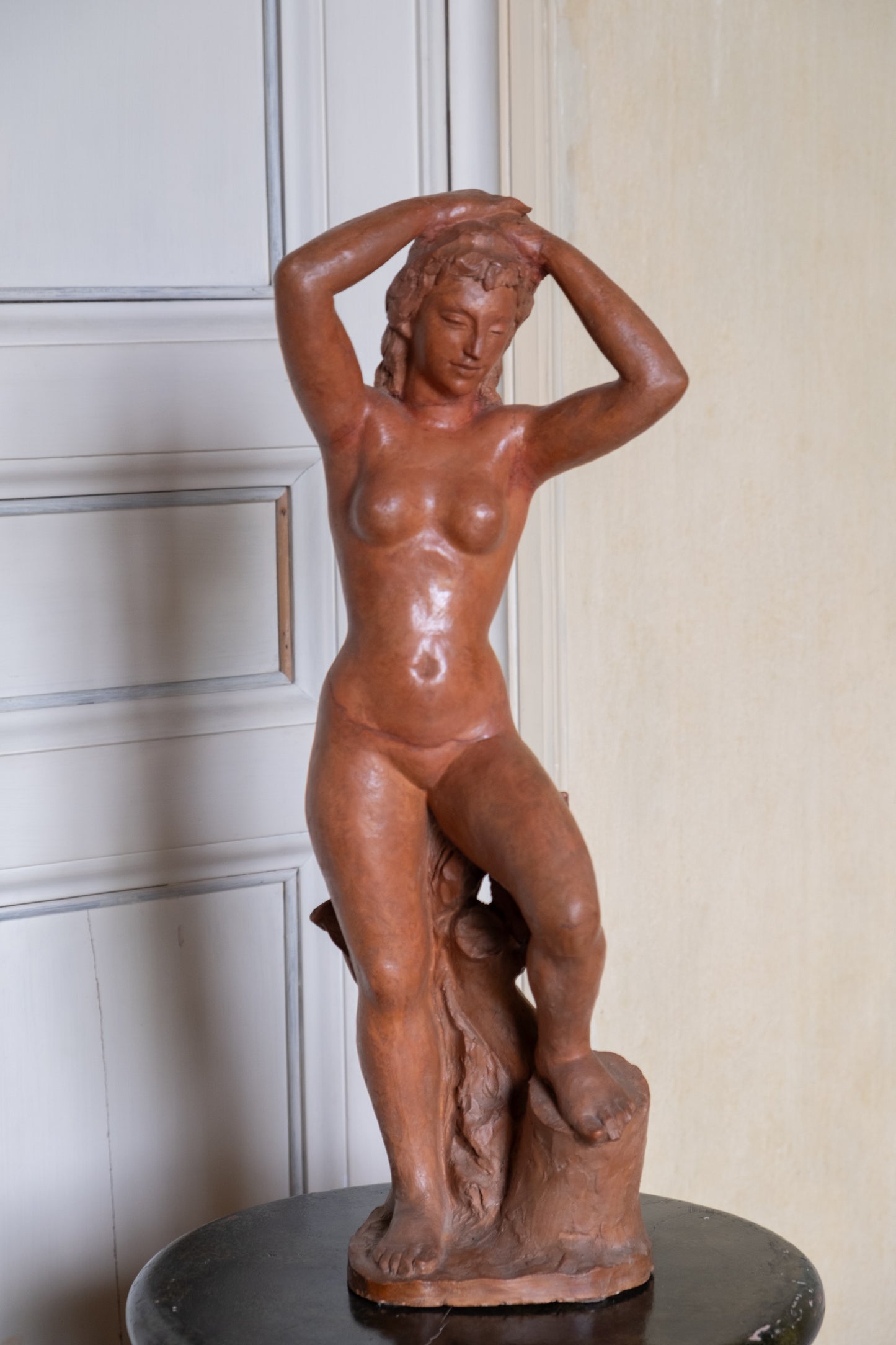
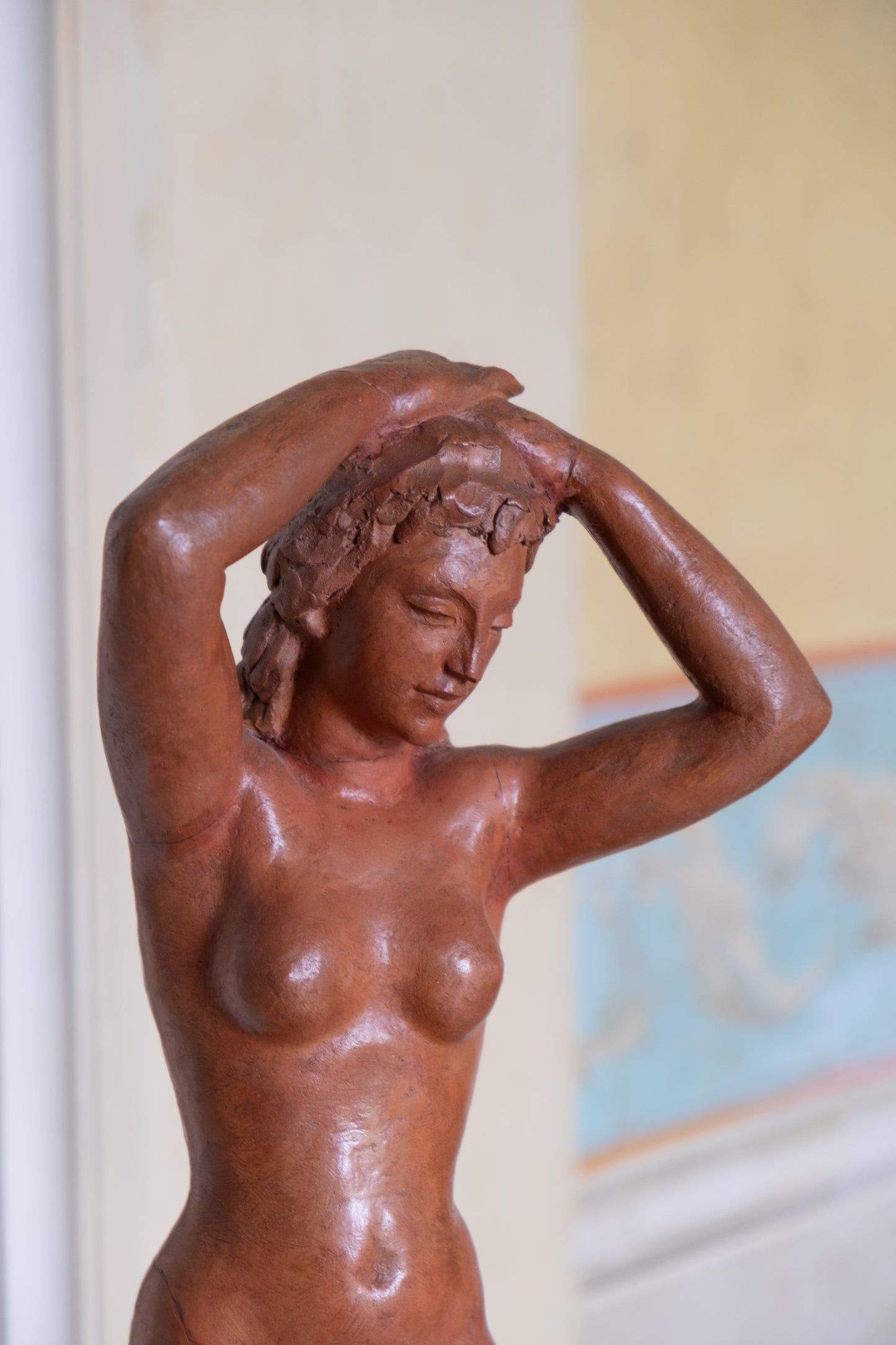
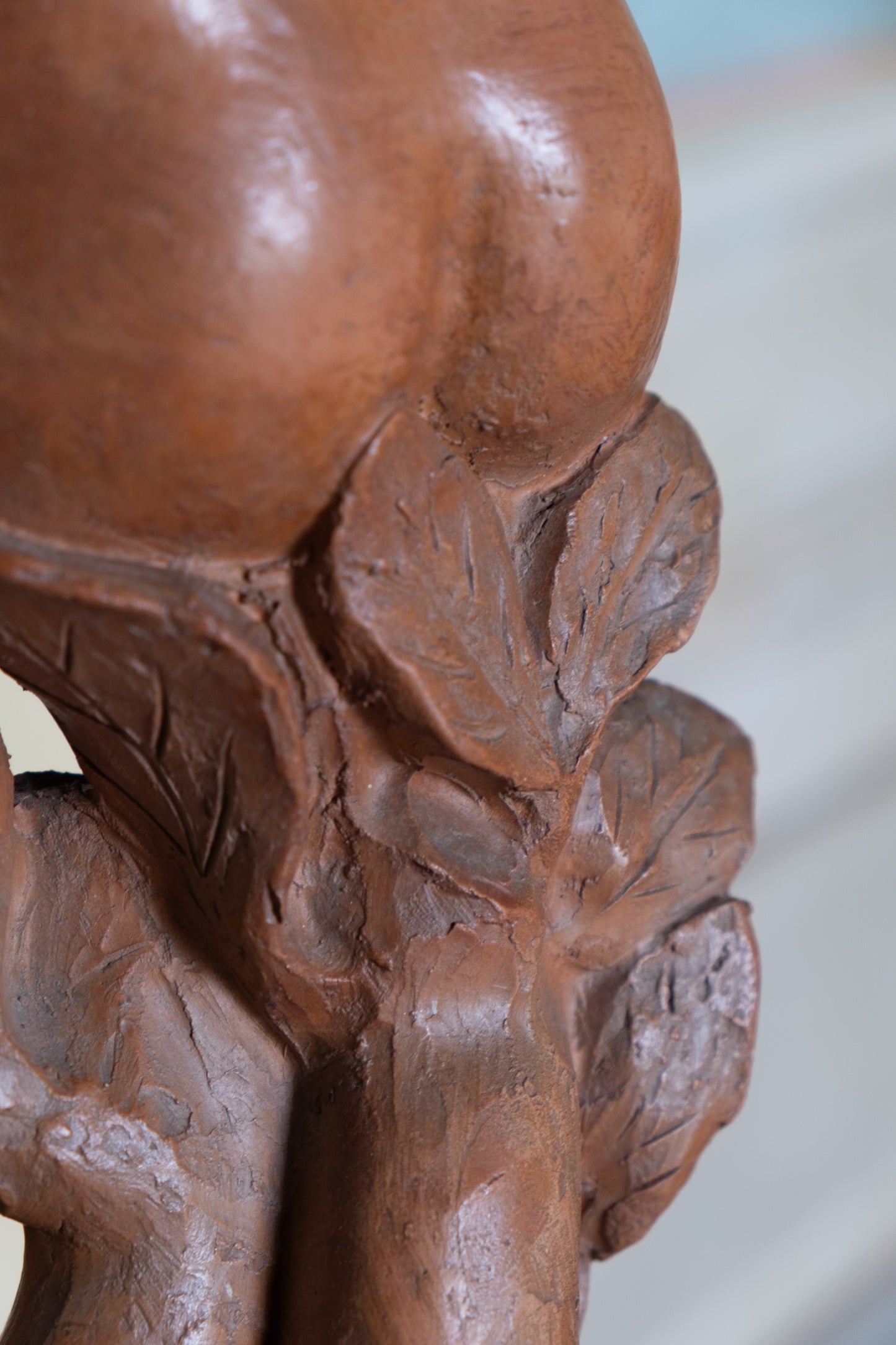
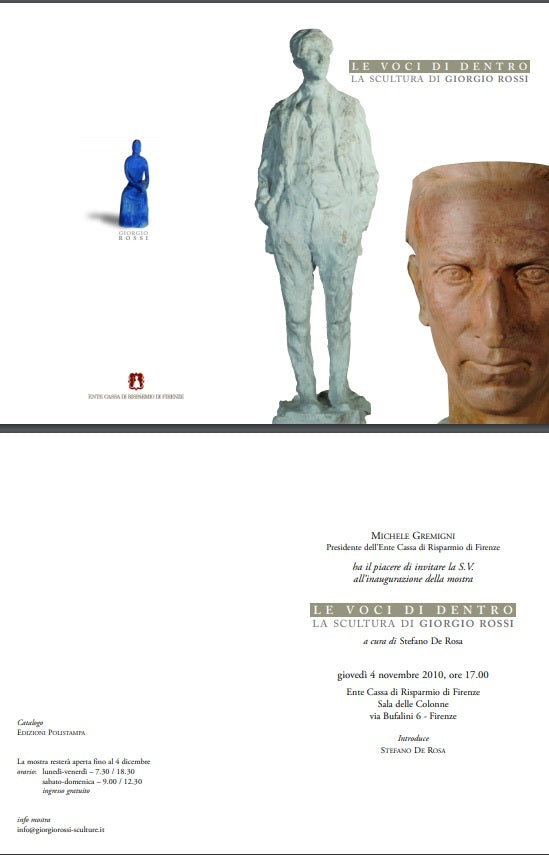
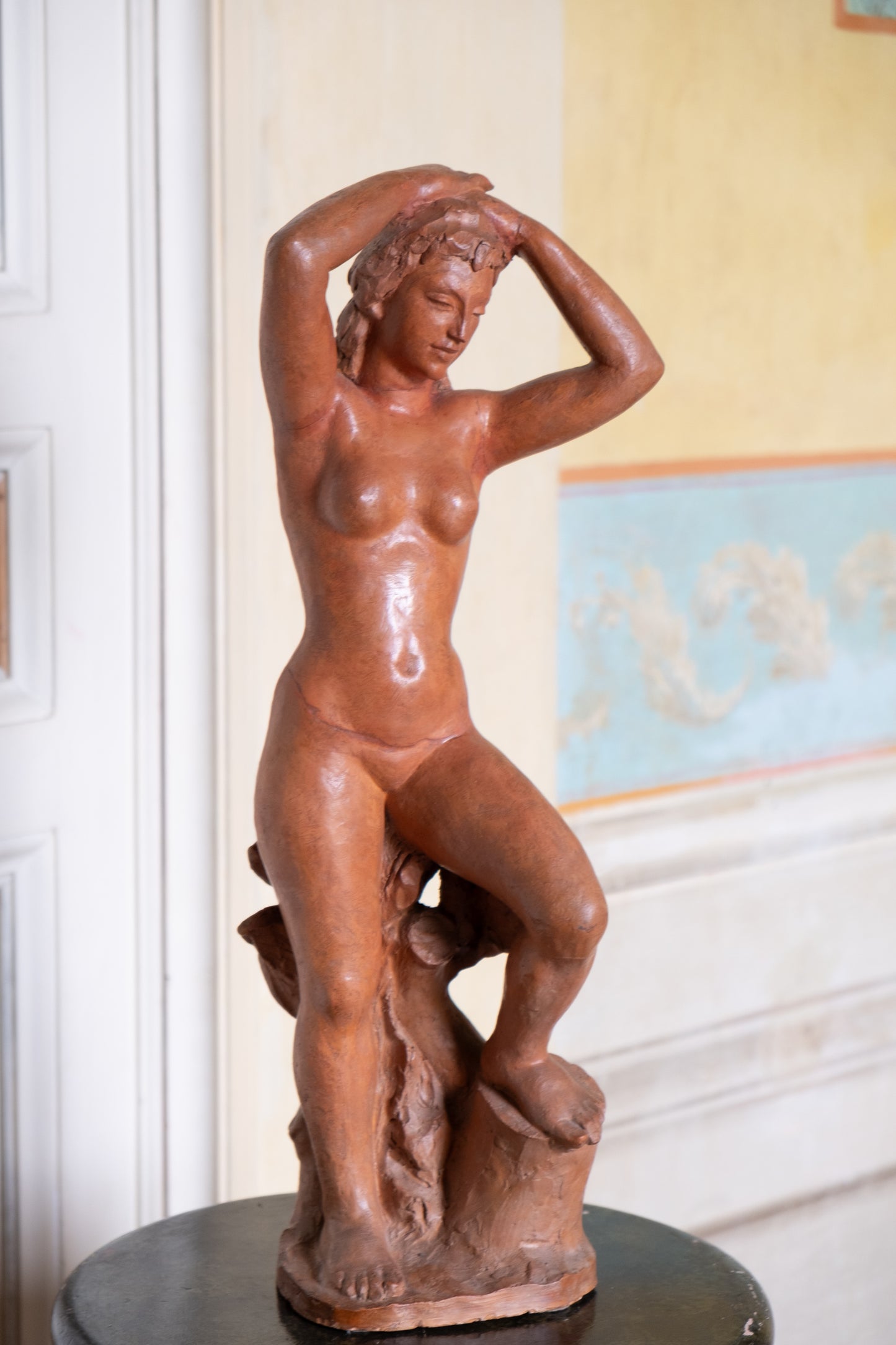
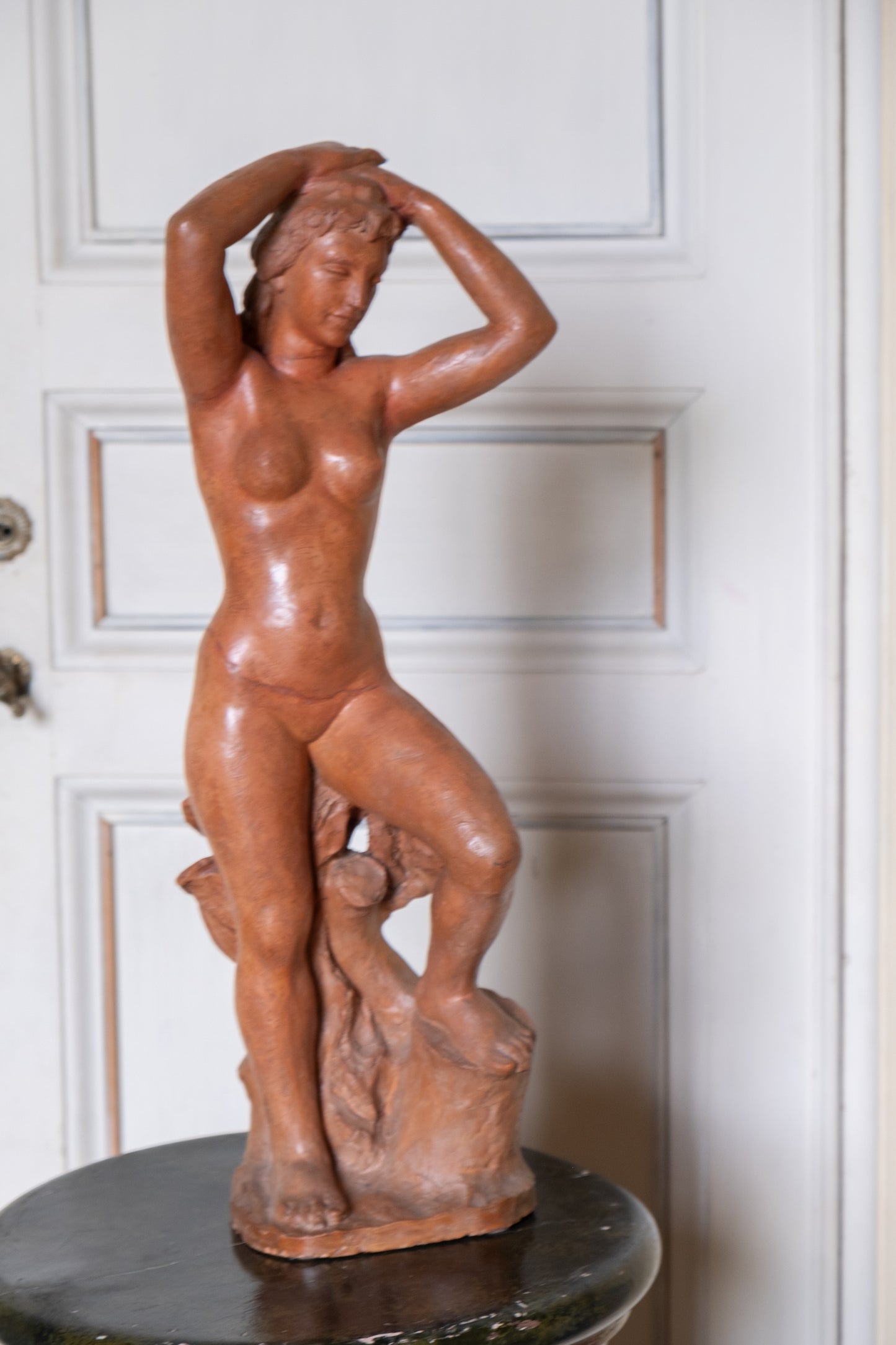
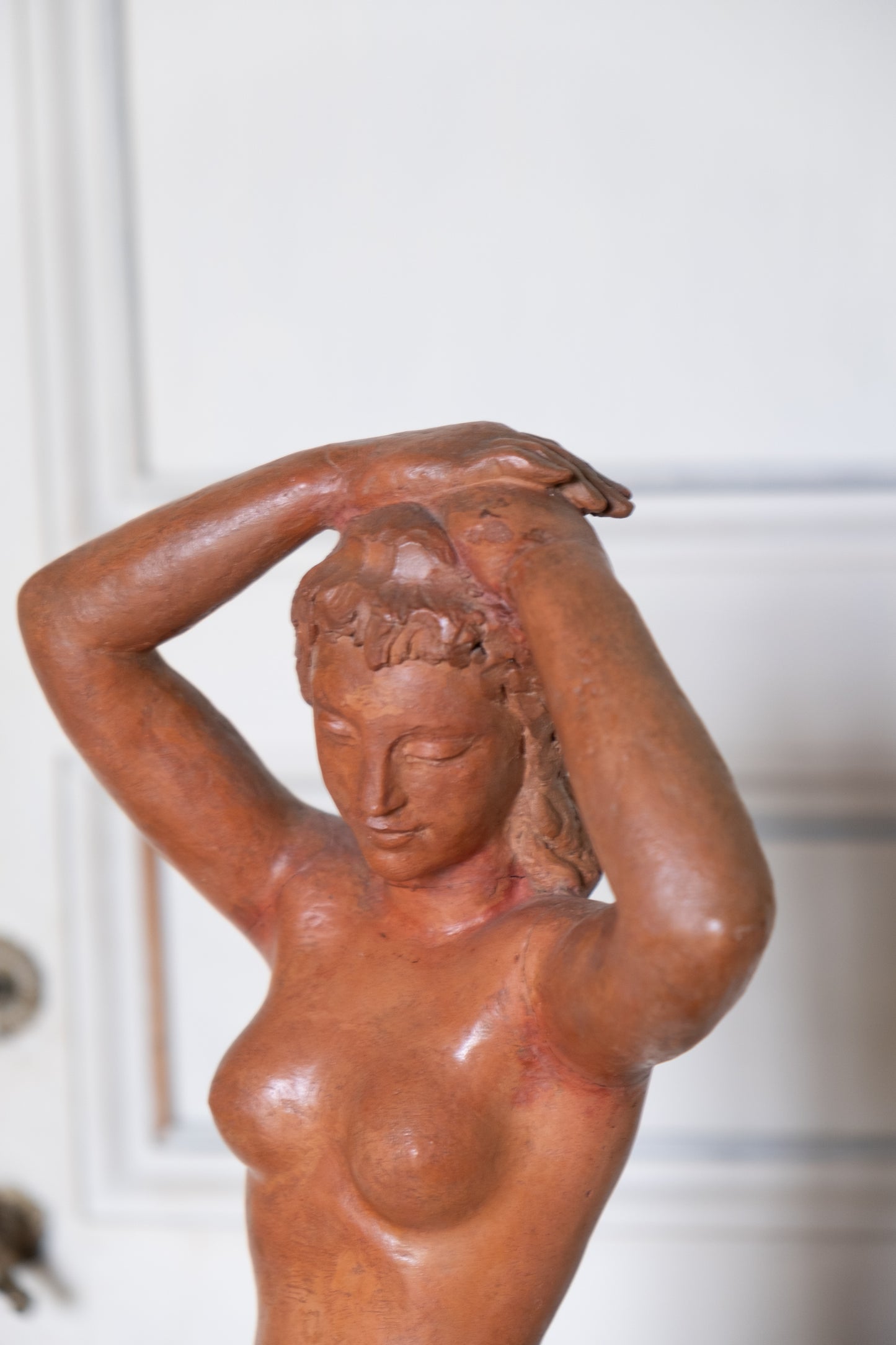
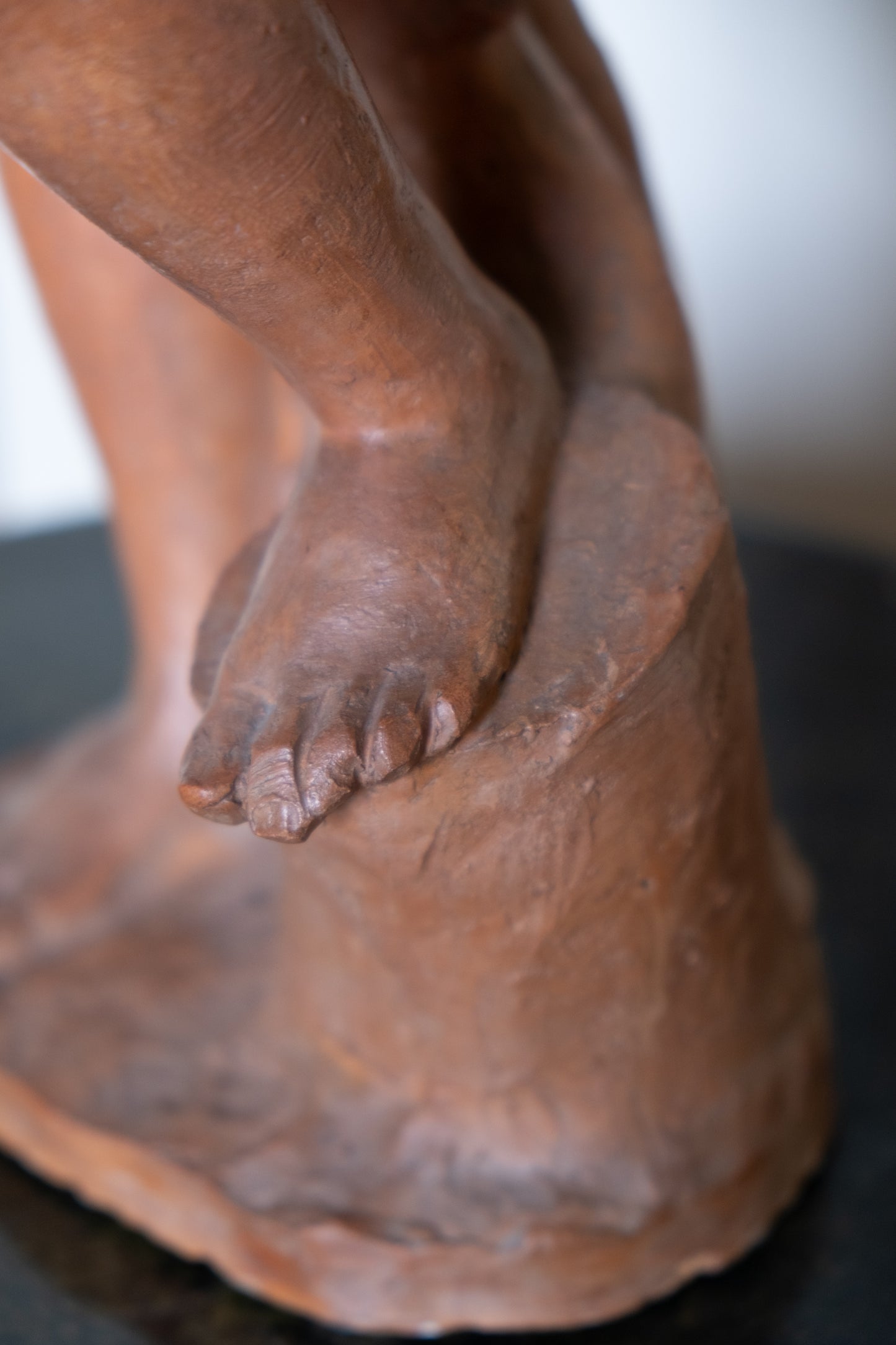
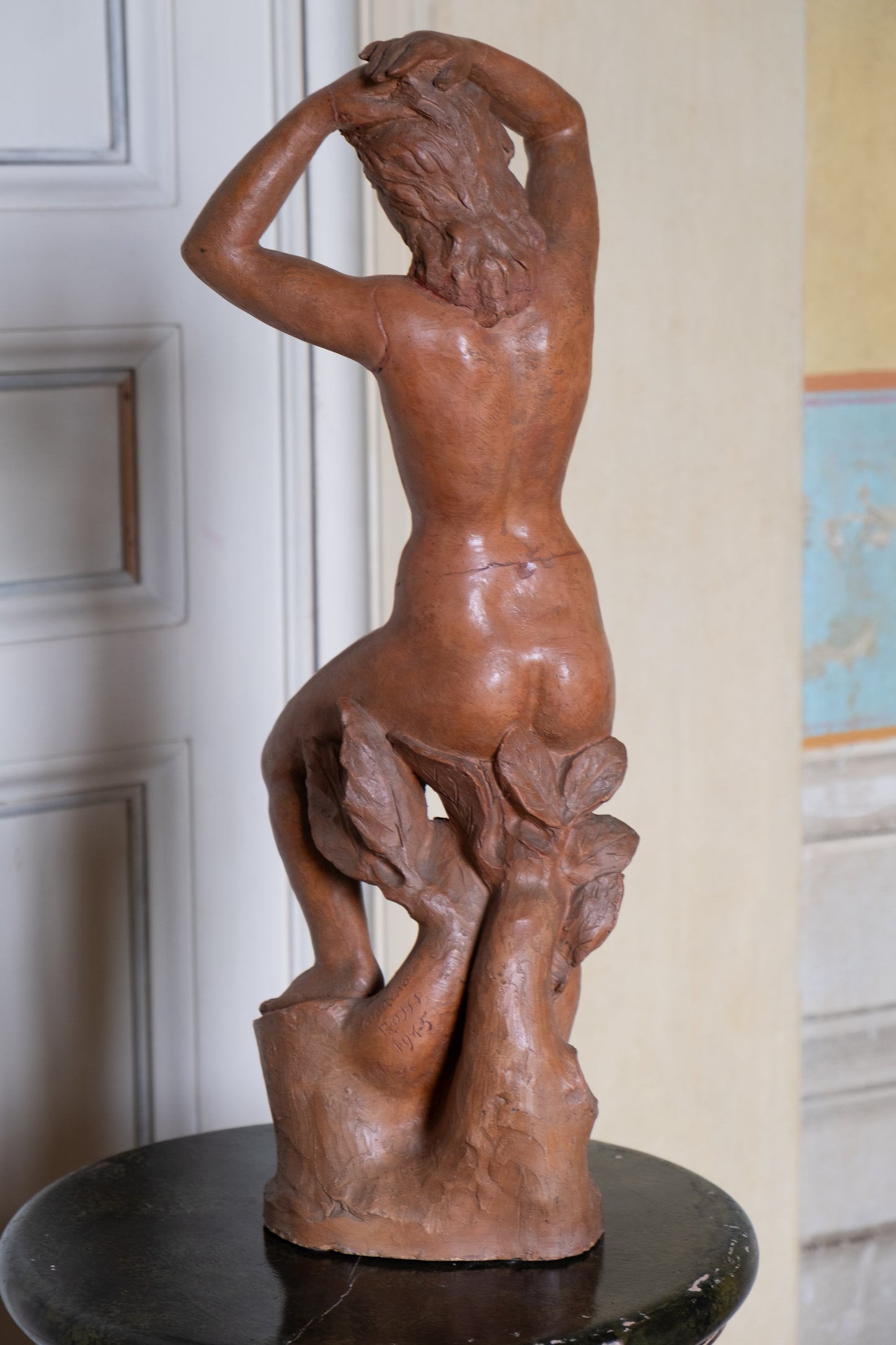
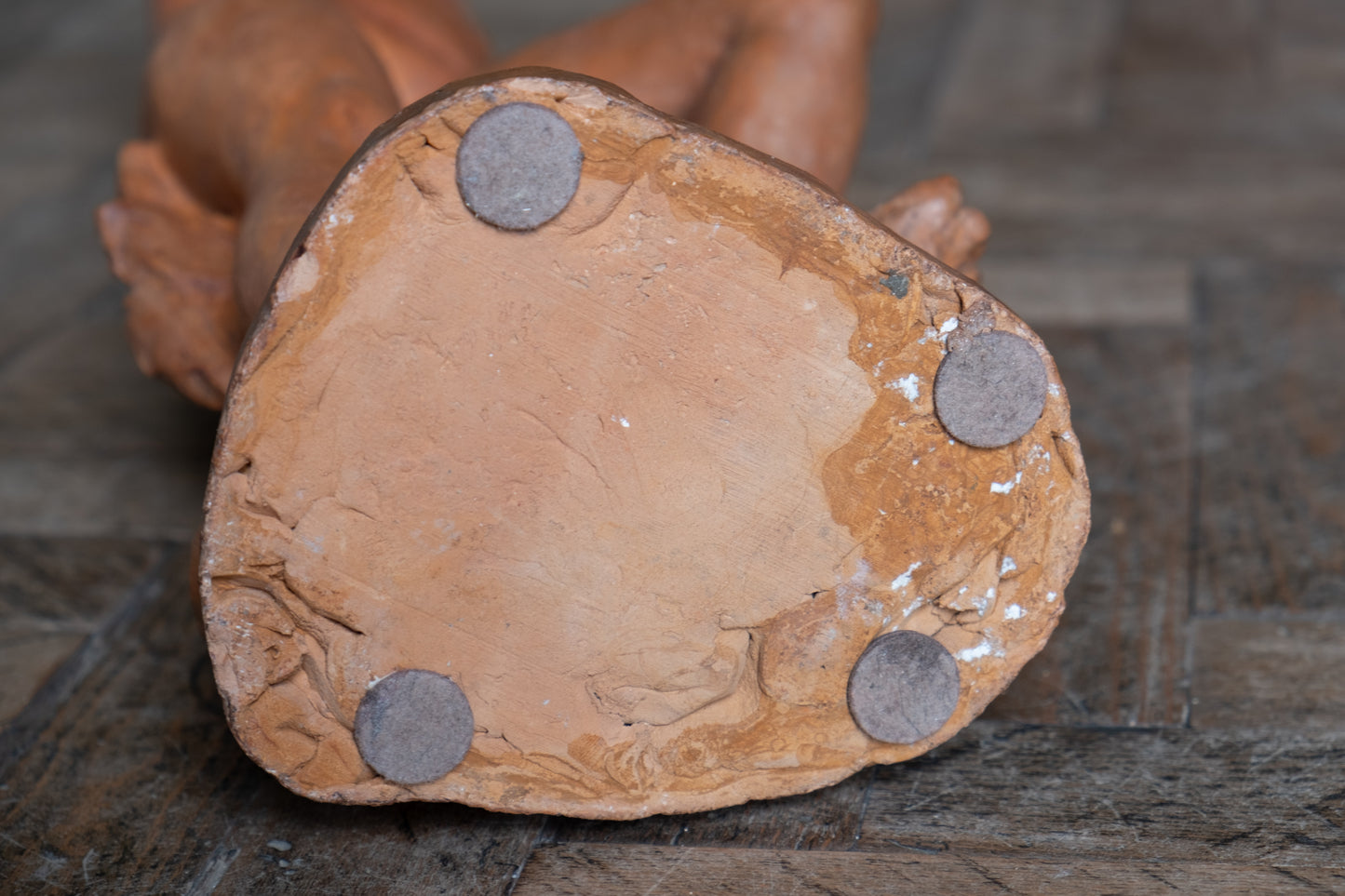
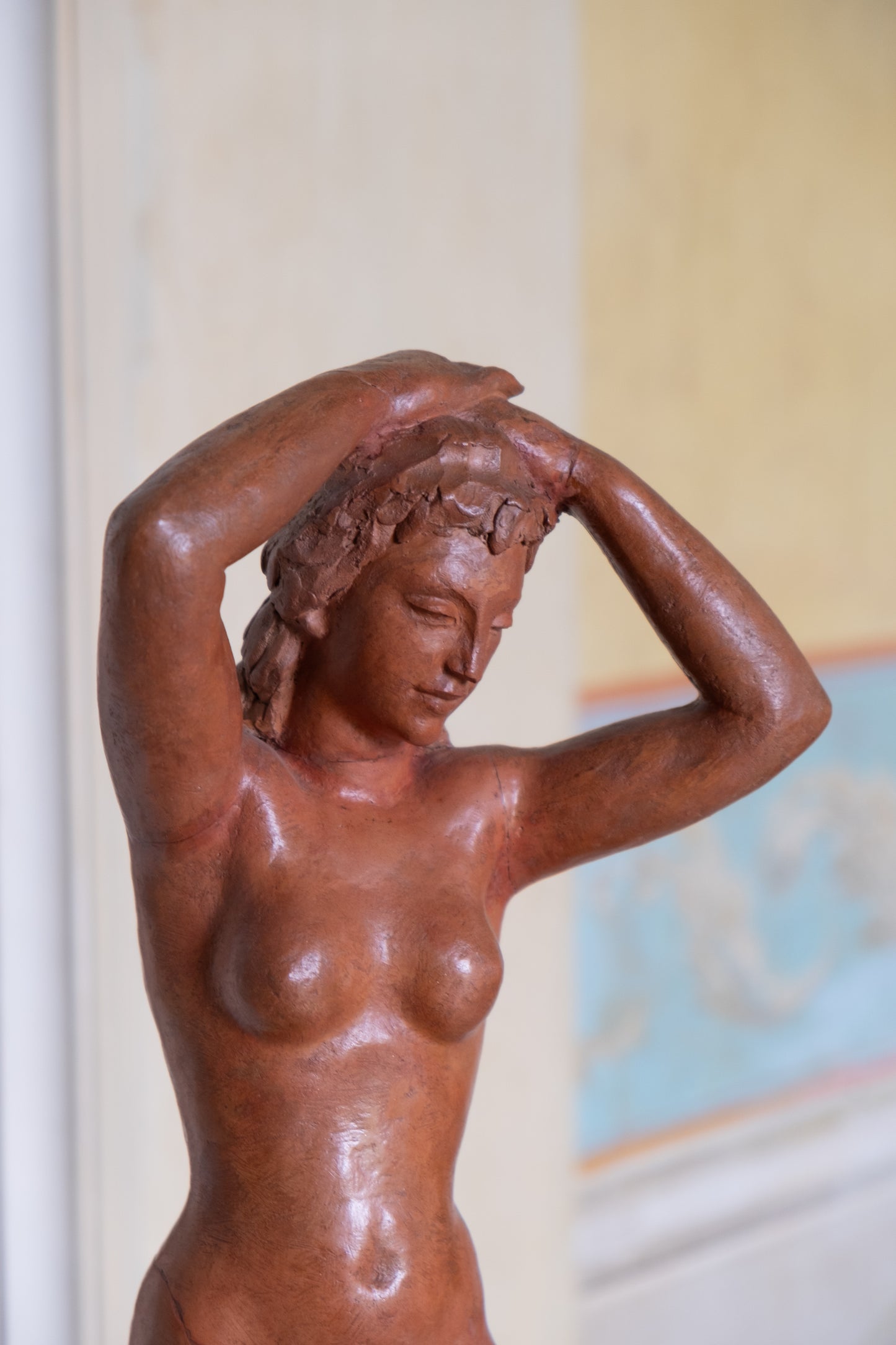
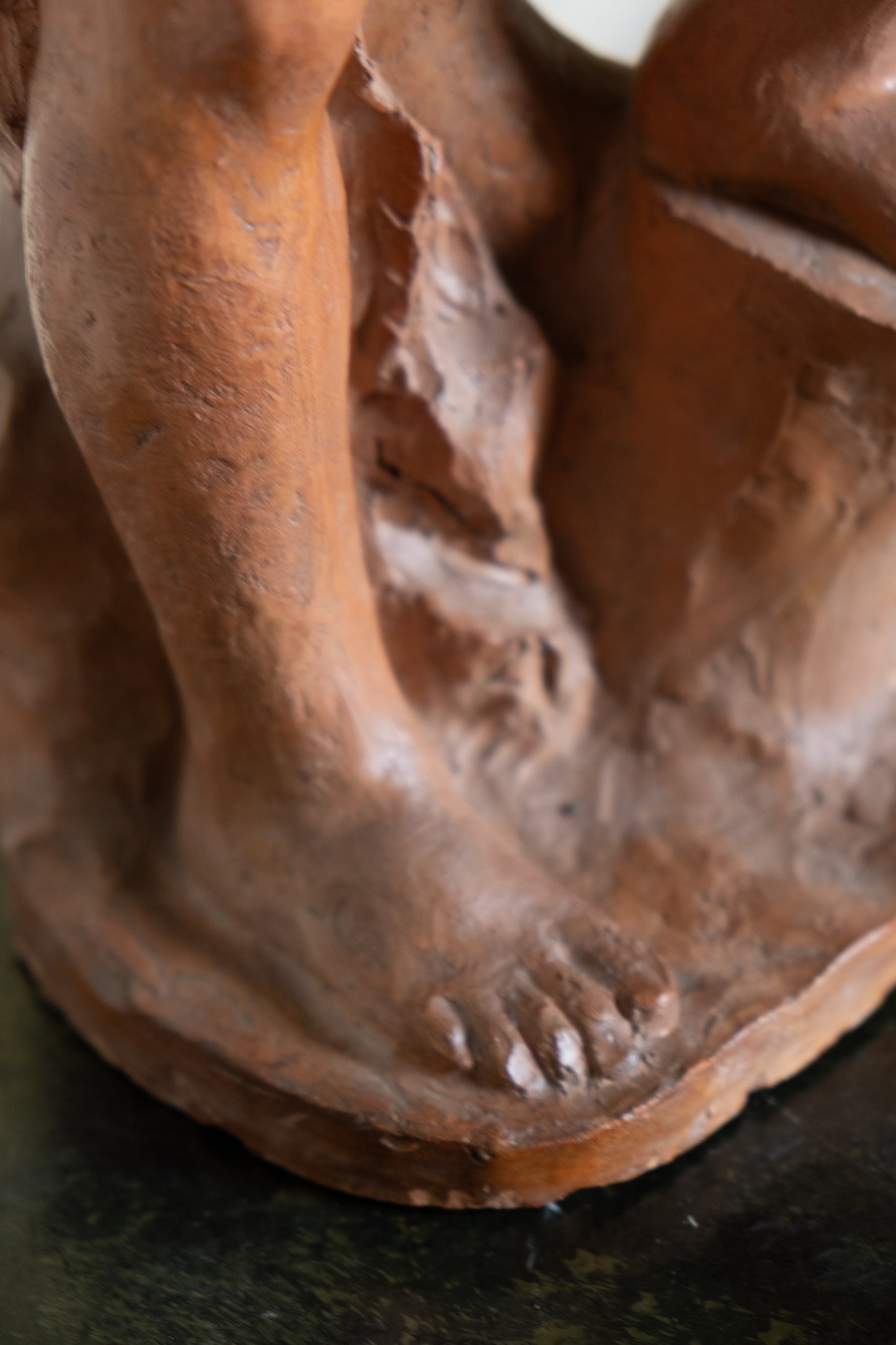
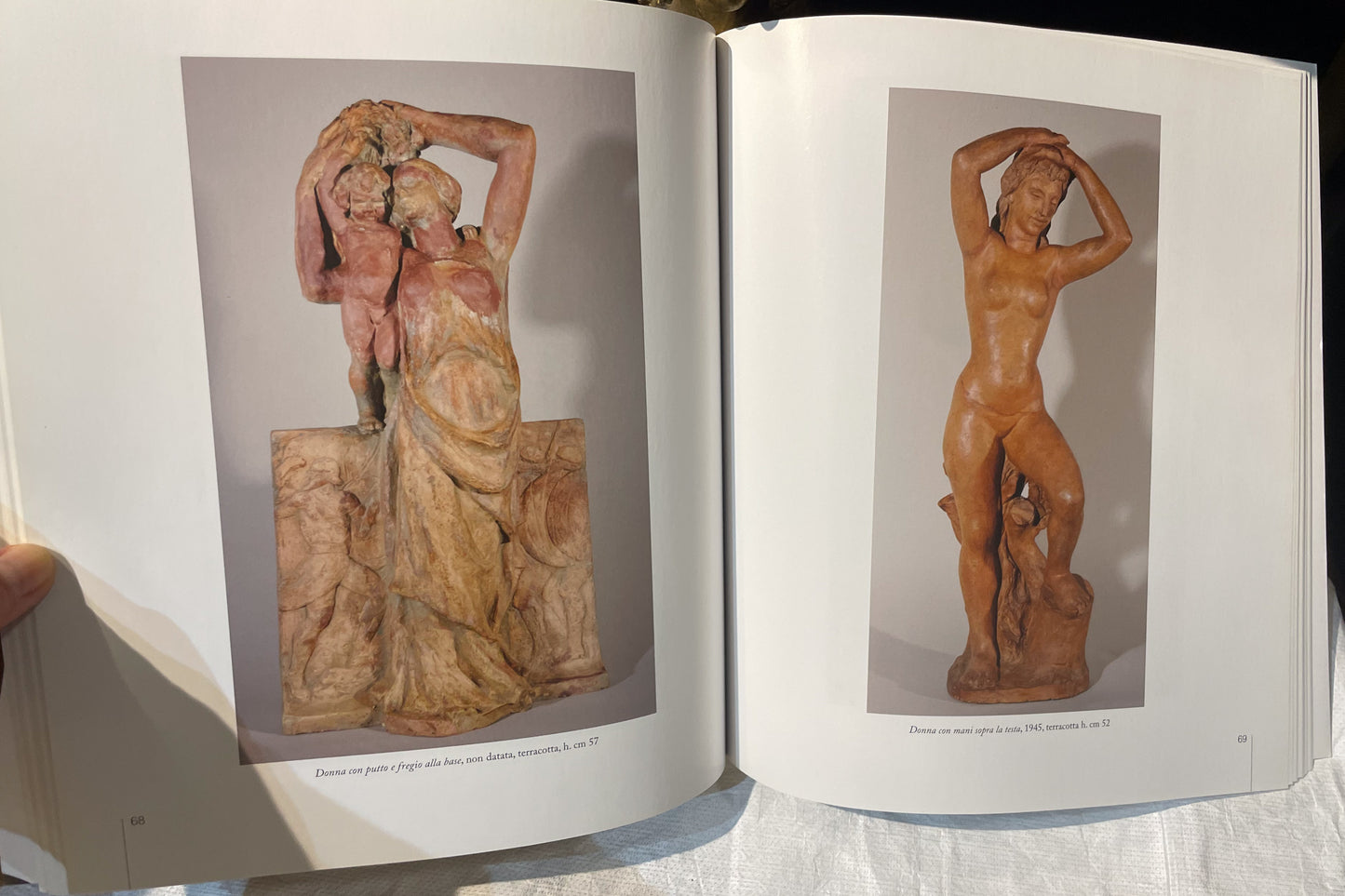
Image with text
Pair text with an image to focus on your chosen product, collection, or blog post. Add details on availability, style, or even provide a review.
